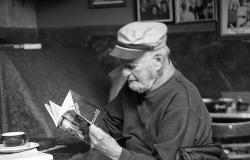“If anarchism had any distinctive element
was to have been lived as a
radically new phenomenon (…)
far from being feared, it was expected and
wanted. Rather than repressed,
narrated” . Bathrobe, Martin
When anarchism caused a sensation. Argentine society, between fear and fascination with libertarian ideals is the book by Martín Albornoz published in 2021 by Siglo XXI editors in the Argentine History collection (Make History). The author is a Doctor in History (UBA), a researcher at CONICET and a teacher at the IDAES School (UNSAM).
Albornoz proposes a new reading of anarchism from its social imaginary, focused on how it has been represented by editorialists, journalists and writers in newspapers and magazines, by police and criminologists, socialists, parliamentarians and immigrants. That is to say, he leaves the voices of the anarchists themselves muted and raises the volume of other voices that, according to the author, were as important as the first in its constitution.
Throughout his research, the author avoids essentialisms and common places in the work on the subject. On the one hand, escaping from traditional historiography that has privileged the link of anarchism with the labor movement, union organizations and culture, in classic works such as that of Iaacov Oved, Gonzalo Zaragoza, Edgardo Blisky, Juan Suriano and Dora Barrancos among others. ; but on the other hand also the “inverted mirror” bibliography that nourishes imaginaries and social representations that exalt the anarchist figures themselves such as David Viñas and Osvaldo Bayer, among others.
Certainly, the distance that Albornoz adopts from the best-known anarchist historiography leads him to develop a truly heterodox and original investigation, navigating curiosity toward singularity.
On the method, the orchestra and literature
The research is deployed with sustainable, varied and enlightening empirical evidence. To do this, he alerts us that although anarchist voices appear in his work, his horizon is broader, recovering advice from the prestigious French historian Marc Bloch about testimonies of a diverse nature, like bundles of waves. [1]
In its multiple and choral invocation, in “seeks [de] flashes of anarchism in a lush print culture” [2] Albornoz recovers diverse sources: morning newspapers such as The nation and The Pressevenings like The newspaper and illustrated magazines like Faces and masks. But also party press, specialized and mass magazines, court files, police documents, bills, parliamentary debates, personal letters, institutional correspondence, caricatures, photographs, scientific books, party pamphlets, literature, as well as varied and specific thematic bibliography.
The challenge of being able to see, scrutinize and analyze sources of a very dissimilar nature, with different textures, tones and timbres, and organize them into an explanatory corpus for presentation, constitutes the basis of the construction of the argument. But how do you deploy the kaleidoscope of multiple and choral sources on the anarchist phenomenon without overwhelming or overwhelming? Through a careful narrative that combines the synchronization of characters, sources and diverse testimonies, integrated into a literary resource that brings it closer to fiction.
Albornoz, like an orchestra conductor, makes each of the sources sound, deploying the file with musicality, adding traces with senses and harmony, like the director who adds layers of instruments constituting a whole. Thus, each layer is organized, finding a place in the narrative and constructing the argument in an orderly and “fine-tuned” manner.
Towards the end of the book all the sources are “sounding” like a pure orchestra: the impact of the news about the European attacks in Buenos Aires (chap. 1), the police reports that vainly wait for anarchist attacks in the city and that therefore On the contrary, they find a “cordial anarchism” (chap. 2), the representations about anarchism that outlined socialism (chap. 3), the criminological (chap. 4) and police (chap. 5) reports on the phenomenon.
But the author also shows the literature of the sources as if they were fictional scenes. Like when he narrates the representative of the River Plate libertarian movement José María Acha as a young maid cleaning a high-class house with a duster, and having his first contact with a news story from La Prensa about the attack against the Spanish minister Canovas del Castillo perpetrated by an anarchist . Or when he narrates the attack carried out with a dagger on the Austrian Empress Sisi, by the anarchist Carnot. Or in the case of the assassination of the King of Italy Umberto I at the hands of the revolver wielded by the anarchist Bresci with a shot to the heart, and in the subsequent commemorations that led to a national mourning and dozens of streets named after him.
An authorial “I” that objects the gaze
in his book History is contemporary literature. Manifesto for the social sciencesthe French historian Iván Jablonka maintains that it is necessary to escape from the self-explanatory positivist history that “replaces the researcher’s point of view with the [supuesto] ‘no point of view’ point of view of the narrator-God”. This story presents “the final result, [como] a ready-made result and not exactly like an investigation”. That is why he states that “objectivity in history has nothing to do with the disappearance of the self. It is based, on the contrary, on the description of your position”. [3]
The author’s place of enunciation in the analyzed book and his authorial “I” emerge transversally. It is an “I” with an opaque image, but with a permanent presence that places the historian at a clear distance from the object. This gives transparency to Albornoz’s story since the conclusions that he draws, when scrutinizing the sources detailed above, express step by step the author’s reasoning, his path in argumentation, contrast and justification. That is, his “kitchen” is open to the sky and allows you to see his laboratory.
It seems that many of the sources discovered that report explosions, attacks, murders, investigations, criminological analysis, socialist epithets about anarchists, police reports, etc., generated feelings and emotions in Albornoz that he wishes to share with his readers and that they produce the same effect. As Jablonka would say, it is “the mixture of fascination and emotion that the historian experiences and seeks to convey.”
Furthermore, the author does not hide his point of view and his “I” position shaped by values, approaches and perspectives within Social History, with influences from historians EP Thompson, Marc Bloch and Carlo Ginzburg, among others.
+++
At the origins of the combative Argentine working class, nourished by immigration currents loaded with experiences of struggle and organization that they brought from their own countries and redefined in these lands, the anarchist current played a decisive role. Even with its strategic weakness that was expressed in important combats such as Red Week, the Centennial strikes or Tragic Week, its contributions to the formation of the labor movement were essential for its subsequent future. As Josefina Luzuriaga highlights in One Hundred Years of Workers’ History in Argentina“The complex social and political framework of the working class at the end of the 19th century and the beginning of the 20th century explains the anarchist hegemony at this stage in the history of the labor movement.”. [4]
Martín Albornoz’s rigorous and recommendable research inserts and makes visible, in turn, the plural history of anarchism, contributing to reconstructing it in one of its least known dimensions: that in which it was imagined and represented (even in its amplified, distorted or stigmatized) in the social and cultural reality of Buenos Aires between 1890 and the first years of the 20th century.





